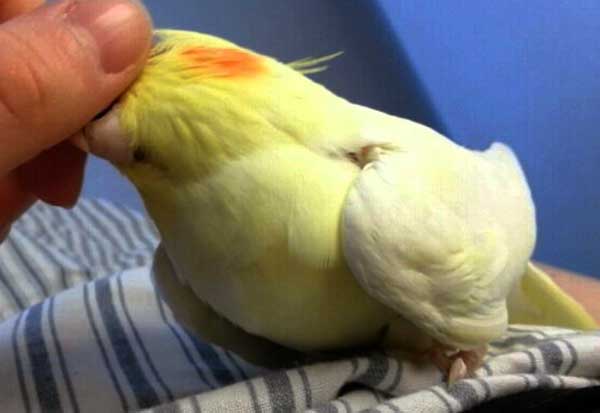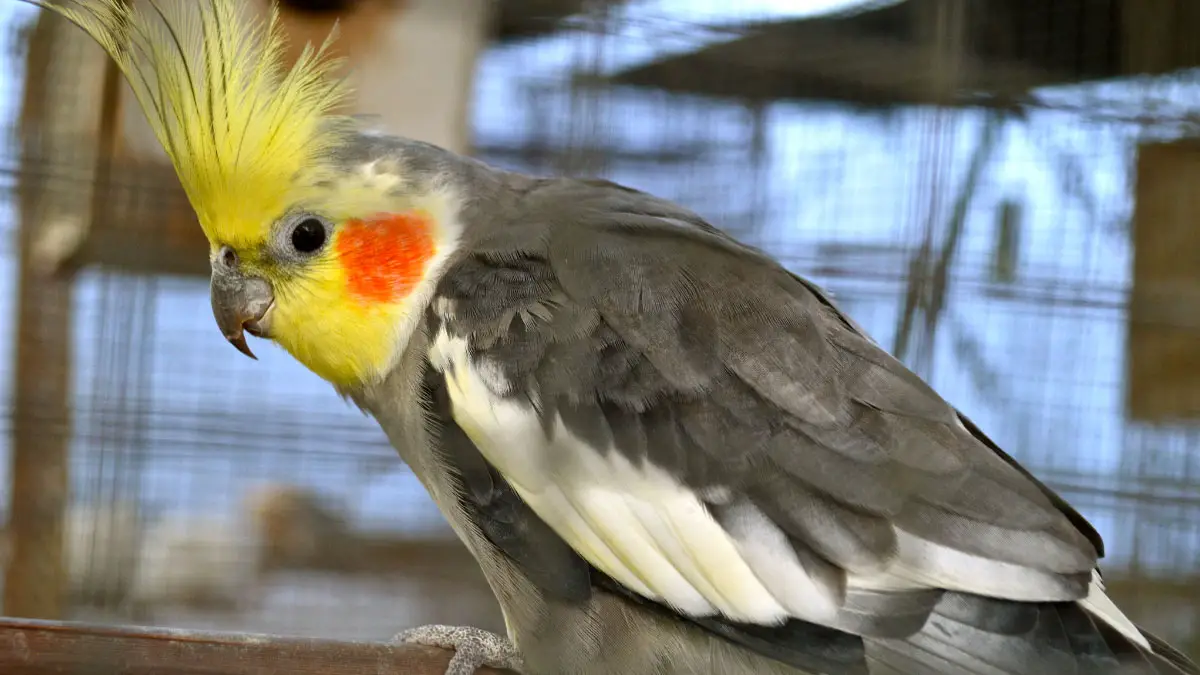Cockatiels are very popular to have as pets nowadays. They’re low maintenance and cute, and these love birds can keep you company for a while. But if you just recently got them, you might be confused about the proper way you can hold them, and nobody wants an angry cockatiel anyway..
So, how to hold a cockatiel? You should reach out slowly with your hand, let it step on your hand, then gently place one of your hands around the body. Then place some support on the back. Make sure to be careful when putting them down, too.
You won’t have to be too careful as they’re quite flexible, but there’s a lot you need to know if you’re a first-time owner of these birds. So today, we’ll go all over the things you need to know if you own a cockatiel. Let’s begin.
How To Hold A Cockatiel Properly?
Here’s a step-by-step guide on how you can hold your cockatiel properly. Make sure to be calm, as the chances of you actually hurting the cockatiel while following these steps is very low —

1. Approach The Cockatiel
First, approach the cockatiel calmly. Make sure you don’t make any sudden noises or movements, as that can get your cockatiel anxious and stressed.
2. Put Your Hand Out
Now put your hand out calmly, and let the cockatiel jump on your hand. They might be hesitant to do this if you first get the bird, so try to talk to them in a soft voice to calm them down.
3. Place Your Hands Around The Body
When it gets on your hand, cup your hand around its body to make sure that you can support the weight.
4. Put Extra Support On The Back
Place some extra support by putting another hand over the cockatiel’s back. However, make sure that you’re not putting too much force as this can cause them discomfort.

5. Hold It At A Proper Level
Hold it at a comfortable height below your eye level.
6. Pet The Cockatiel To Make Them Comfortable
Stroke the cockatiel calmly to pet them, and talk to them in a soothing and soft voice to make them more comfortable.
After following these steps, you can successfully hold a cockatiel without giving it any anxiousness or discomfort. To put it back down, you need to put your hand down simply, and they’ll usually hop off. If they don’t, you can give them a little nudge on their back, but don’t use too much force.
Do Cockatiels Like To Be Held?
Cockatiels are quite caring and social birds. Most cockatiels do like to be held, but you always need to be calm, or else they might get stressed, surprised, or even scared and anxious. Approach them gently, and try not to force them to be held.
Cockatiel body language is quite easy to understand. If they’re even a little hesitant to get on your hand, you shouldn’t force it. But to make your cockatiel more eager to be held, you can offer treats when you’re holding it too. This can make them feel more calm and happy.

You can also try to gently scratch them and pet them too. This can make them feel more comfortable and eager to be held. Just make sure that you’re not doing it too much, and you’re good to go.
Where Do Cockatiels Like To Be Touched?
Generally, they enjoy being touched near their neck and head gently, and even more on their cheeks.
You can tell if it likes being a pet when you have a slight sound of the beak grinding or making excited noises. But if you have an angry cockatiel, make sure to respect its boundaries and don’t go too close.

But every cockatiel is different, so if you have a rare cockatiel bird, it might like being a pet in other parts of its body. Don’t pet them too much, though, as this often irritates them.
It’s important to know the proper place where you should and shouldn’t pet your cockatiel, as it could trigger the instinctive reflexes of the bird.
How Do You Hold A Cockatiel in Your Hand So It Can’t Bite?
Most of the time, you won’t have to worry about your cockatiel biting you when you hold it. It’s incredibly uncommon for this to happen, even if you get a wild cockatiel and tame it.
But to help with the process and make them more comfortable to reduce the chances of even more cockatiel biting you, you should try to offer treats when holding it and pet it gently.
You should also avoid sudden movements and, overall, just take care of your cockatiel. If you do this, they won’t bite you. If it does bite you, make sure not to pull your hand away suddenly as this can injure you and the cockatiel. Try to touch the mouth, and it’ll stop biting automatically.

Generally male cockatiels bite more, too. The most common cockatiel colors for a male cockatiel is grey, with a yellow head. For a female cockatiel it might have a grey body and face, but with lighter cheek patches usually being yellow.
How To Hold A Cockatiel To Give Medicine?
Giving any pet medicine can be difficult, and cockatiels are no different. If they resist and you force them to take medicine, they might be irritated or anxious, too. So make sure you give them the medicine properly.
To help give it medicine, you should approach it gently, and hold it in your hand. Then offer it a treat, and give it the medicine. If it’s a liquid, use a syringe to put it inside their beak. A visual representation of this might be easier to understand, though.
But if the medicine is a pill, you should hide it in food, such as bread.
Make sure to give it treats afterward, too, or else they might be hesitant to take any more medicine. But if you need even more help, you should consult a vet on how you can give cockatiel medicine.
They might be hesitant to take medicine, especially when they’re sick, so you should know how to tell if your cockatiel is sick.
How To Catch A Cockatiel in A Cage?
If you want to catch your cockatiel in a cage or put it back, you should first take a towel and calmly approach your cockatiel. Then pick it up in your hand as you would normally, and put them back if you’re done.
If they seem scared to get in or get out of their cage, you should try to put a treat in your hand. This will make it, so they automatically jump in your hand. Don’t force them to get in or out of their cage, though.

You should also try only to put them in their cage when they’re going to sleep and let them spend the rest of their time outside.
Frequently Asked Questions (FAQs)
Here are some of our most frequently asked questions to help clear any more confusion —
No, you generally shouldn’t pick your cockatiel up or hold it with just its feet. Place your hand over their body and another hand on their back, or else they might feel discomfort or even get anxious.
Yes, you should. Try to pick up your cockatiel and hold them with a towel while cutting its nails. You should cut the nails every 2-4 weeks, too.
Most of the time, whether it’s a white cockatiel or any other of the cockatiel colors, they’ll behave the same. Some might be a bit more anxious than others at first, but all cockatiels are usually friendly and like to be held. Aside from a white cockatiel, green and yellow cockatiels are also common.
Conclusion
The question of how to hold a cockatiel is common if you’re getting the bird for the first time. And to hold it, you’ll need to gently approach it, pull your hand out, and let it jump on your hand.
Then you can use one hand to cup it around the body and another one to support the cockatiel’s back, and you can lift them up. Make sure to be calm and not to have any sudden movements, as that can scare them. You can give them treats afterward if they’re not too eager to be held.








